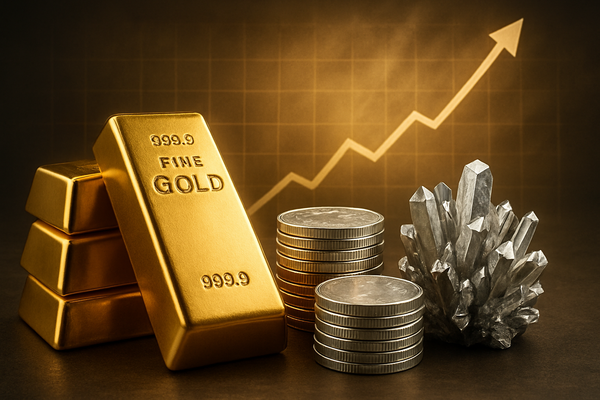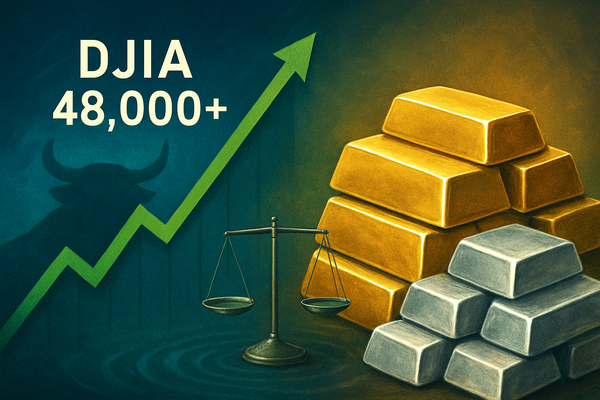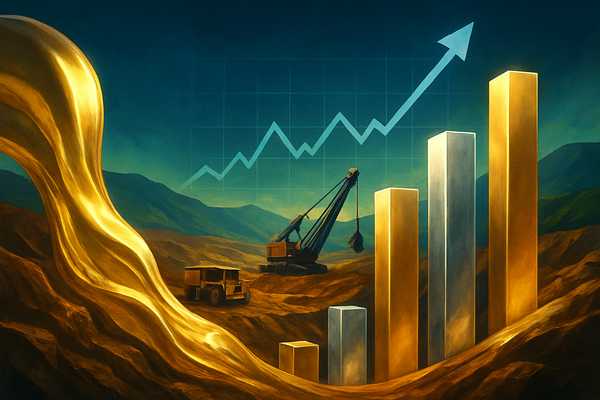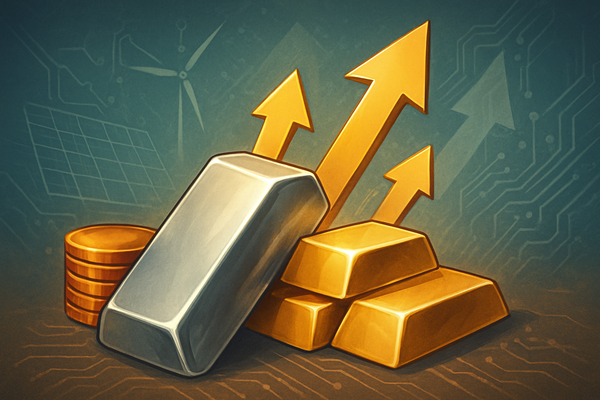Gold and Silver Shine: Precious Metals Defy Market Rally Amidst Geopolitical Jitters and Inflation Fears
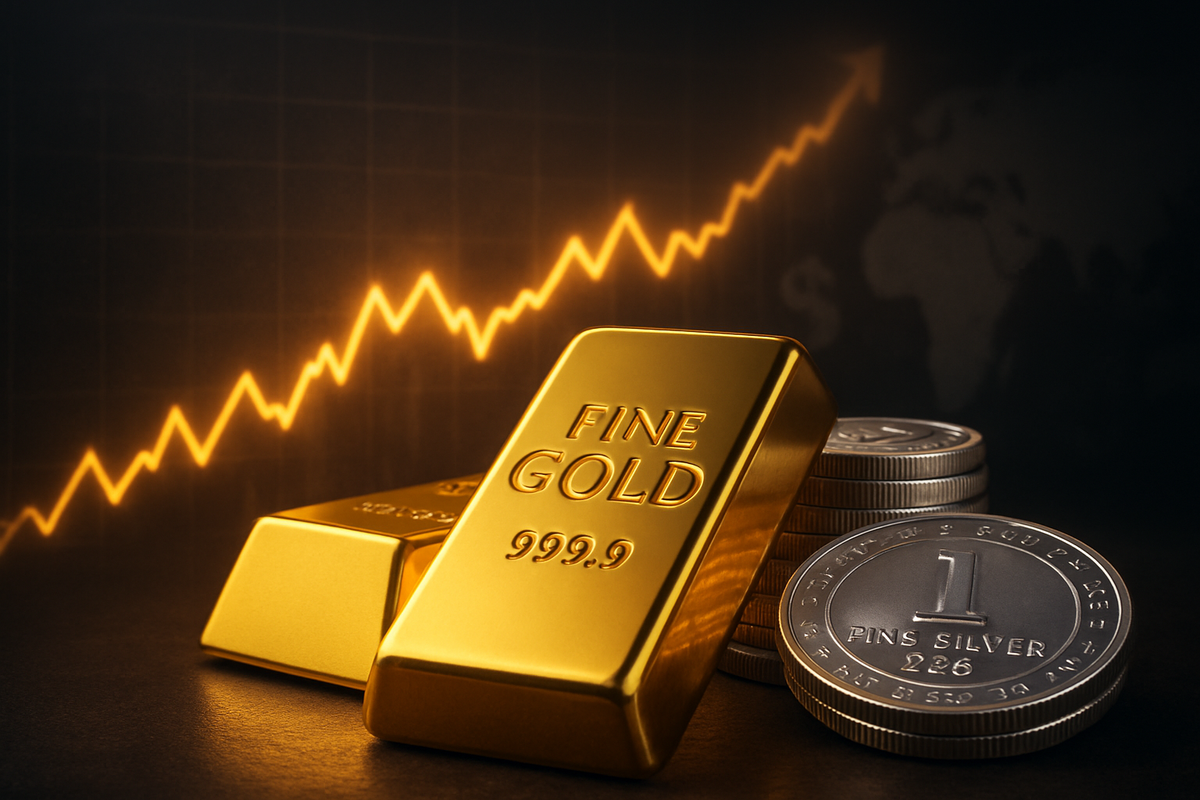
In a financial landscape often characterized by straightforward correlations, a remarkable divergence is currently unfolding: precious metals, specifically gold and silver, are not just holding their own but are significantly outperforming a broader market that is also experiencing an upward surge. As of November 2025, this counter-intuitive trend signals a deep-seated apprehension among investors, who are increasingly seeking refuge in tangible assets despite an overall optimistic equity market. The immediate implications point to a significant re-evaluation of portfolio strategies and a heightened focus on underlying economic and geopolitical fragilities.
This simultaneous rally underscores a complex interplay of macroeconomic forces, persistent geopolitical tensions, and shifting monetary policy expectations. While a broad "everything rally" has been observed, fueled by seasonal factors and strong corporate earnings in specific sectors like AI, the robust performance of gold and silver suggests that investors are hedging against risks that the wider market may be underestimating. The trend is a clear indicator that beneath the surface of market optimism, there are palpable concerns about inflation, currency debasement, and global stability.
Unpacking the Golden Anomaly: Drivers Behind the Precious Metal Surge
The current outperformance of precious metals is not a fleeting phenomenon but rather a sustained trend driven by several powerful catalysts. A primary factor is the persistent geopolitical uncertainty. Ongoing international conflicts, particularly in Eastern Europe and the Middle East, coupled with enduring US-China trade rivalries, continue to stoke investor anxiety. Domestically, political instability in the United States, including a protracted government shutdown and concerns regarding the Federal Reserve's independence, further contribute to a climate of uncertainty, compelling investors to flock to safe-haven assets.
Concurrently, inflation concerns and the weakening US dollar play a crucial role. Despite the broad market rally, inflation remains a significant worry, and precious metals historically serve as a robust hedge against rising prices and currency devaluation. The US dollar has experienced considerable weakening, influenced by expectations of Federal Reserve rate cuts, slowing US economic growth, and burgeoning fiscal deficits. A weaker dollar makes dollar-denominated gold and silver more attractive to international buyers, thereby boosting demand. Some analysts also highlight concerns over the "debasement" of the US dollar, further solidifying the appeal of hard assets.
Adding to this, the anticipation of US Federal Reserve interest rate cuts is a significant tailwind. Recent weak US economic data, including a softening labor market and declining consumer sentiment in November, have substantially increased the probability of a December 2025 Federal Reserve interest rate cut, with expectations for further easing by March 2026. Lower interest rates diminish the opportunity cost of holding non-yielding assets like gold and silver, making them comparatively more attractive than fixed-income investments. This monetary policy pivot is a critical driver for current and future precious metal performance.
Finally, strategic central bank accumulation provides a strong foundational demand. Central banks globally, notably led by China, are aggressively increasing their gold reserves. This strategic diversification away from US Treasuries and the US dollar aims to reduce reliance on traditional reserve currencies and safeguard national assets against potential sanctions or currency volatility. This institutional demand provides a robust underlying floor for gold prices. Silver, in particular, benefits from robust industrial demand, entering its fifth consecutive year of supply deficits, driven by its critical role in electronics, solar panels, and emerging AI technologies.
Corporate Beneficiaries and Market Repercussions
The sustained rally in gold and silver prices has direct and significant implications for public companies operating within the mining sector. These companies are poised to be major beneficiaries, witnessing substantial boosts to their revenues, profitability, margins, and cash flows.
Leading gold producers like Barrick Gold (NYSE: GOLD) and Newmont Corporation (NYSE: NEM) are experiencing considerable upside. Higher commodity prices directly translate into improved earnings, as their cost of extraction remains relatively stable while the market value of their output increases. This amplified profit potential often leads to gold mining stocks outperforming the underlying commodity itself, attracting investor capital seeking leveraged exposure to the precious metals boom. Companies with strong balance sheets and efficient operations are particularly well-positioned to capitalize on this environment, potentially increasing exploration budgets, expanding existing operations, or even pursuing strategic acquisitions.
Conversely, companies heavily reliant on a strong US dollar or those with significant exposure to inflationary pressures without adequate hedging strategies might face headwinds. However, the primary impact is overwhelmingly positive for the precious metals mining and exploration industry. The increased scrutiny on monetary policy, particularly the Federal Reserve's actions, will also indirectly affect companies across various sectors, as interest rate movements influence borrowing costs and consumer spending, but the direct beneficiaries remain those tied to the production and sale of gold and silver.
The broader market reaction includes a noticeable shift in investor sentiment, with a resurgence of Western investor participation alongside strong retail and institutional demand for precious metals. This indicates a deeper desire among investors to preserve capital and diversify portfolios amidst perceived economic fragility, even as equity markets climb. This re-evaluation of portfolio strategies suggests a more structural, long-term shift towards tangible assets as a critical component of wealth management in a volatile global landscape.
Wider Significance and Historical Context
The outperformance of precious metals amidst a broad market rally is not merely a transient market anomaly; it signifies a deeper re-calibration of investor priorities and a potent indicator of underlying systemic concerns. This event fits into broader industry trends emphasizing diversification and risk aversion in an increasingly unpredictable global economy. Investors are no longer solely focused on growth but are actively seeking hedges against inflation, currency debasement, and geopolitical shocks. The strategic accumulation by central banks, particularly from nations aiming to de-dollarize, underscores a significant geopolitical shift away from reliance on a single reserve currency.
The ripple effects of this trend are substantial. For competitors and partners in the financial markets, it necessitates a re-evaluation of asset allocation models and risk management frameworks. Traditional portfolio theories, which often view equities and precious metals as inversely correlated, are being challenged by this simultaneous ascent, prompting a more nuanced understanding of inter-asset relationships. The increased demand for precious metals also puts additional pressure on the supply chain, potentially leading to higher costs for industrial users of silver or prompting increased investment in new mining ventures.
Regulatory and policy implications are closely tied to central bank actions. The anticipated Federal Reserve interest rate cuts, driven by weakening economic data, highlight the ongoing balancing act central banks face between managing inflation and supporting economic growth. Should inflation persist despite rate cuts, the appeal of precious metals as an inflation hedge will only intensify, potentially pressuring policymakers to consider more aggressive or unconventional measures.
Historically, precious metals have served as reliable safe havens during times of economic uncertainty and geopolitical turmoil. Comparisons can be drawn to periods of high inflation in the 1970s or during major financial crises, where gold and silver prices surged as investors sought protection against depreciating currencies and market instability. The current environment, however, presents a unique confluence of these factors alongside a simultaneous equity market rally, suggesting a complex interplay of forces where both growth and risk aversion are concurrently driving market behavior. This dual rally could be indicative of an "everything bubble" in some analysts' views, where asset prices are inflated across the board due to excessive liquidity or speculative fervor, making the flight to tangible assets a prudent defensive strategy.
The Road Ahead: Navigating a Volatile Landscape
Looking ahead, the trajectory of precious metals appears set for continued upward momentum, albeit with potential periods of consolidation and profit-taking after significant advances. In the short-term, market participants will be keenly watching the US Federal Reserve's December 2025 meeting for definitive signals on interest rate policy. A confirmed rate cut or stronger indications of monetary easing could provide another significant boost to gold and silver prices, as the opportunity cost of holding non-yielding assets further diminishes.
Long-term possibilities suggest a sustained upward trajectory, driven by the enduring macroeconomic and geopolitical factors. Analysts predict gold prices could continue their ascent, potentially reaching $4,700-$5,000 per ounce, with silver aiming for $65 per ounce by 2026. These projections are underpinned by the persistent demand from central banks, ongoing inflation concerns, and the critical industrial applications of silver.
Strategic pivots and adaptations will be essential for investors. The current environment necessitates a re-evaluation of traditional asset allocation models, with precious metals increasingly viewed as indispensable components for portfolio diversification and risk mitigation. This could lead to a broader shift in investment strategies, favoring tangible assets over purely growth-oriented equities, especially if the broader market rally shows signs of fragility or if inflation proves more stubborn than anticipated.
Market opportunities will emerge for both mining companies and investors. Mining companies may find favorable conditions for capital raising, exploration, and expansion. Investors, on the other hand, might look for opportunities in precious metals ETFs, physical bullion, or well-managed mining stocks that offer exposure to the sector's growth. Challenges could arise from potential market corrections, increased regulatory scrutiny on mining practices, or unexpected shifts in monetary policy that could temper the rally. Potential scenarios range from a continued steady climb for precious metals, maintaining their safe-haven status, to more volatile price movements influenced by geopolitical events or sudden shifts in economic outlook.
A New Era for Precious Metals: Key Takeaways and Investor Outlook
The current outperformance of precious metals amidst a broad market rally marks a significant moment in financial markets, underscoring a complex interplay of forces that demand investor attention. The key takeaway is clear: despite the apparent optimism in equity markets, a deep undercurrent of apprehension regarding global stability, persistent inflation, and the reliability of traditional financial instruments is driving capital towards gold and silver. This trend reinforces the enduring role of precious metals as indispensable safe-haven assets and powerful hedges against systemic risk and currency debasement.
Moving forward, the market will likely remain highly sensitive to geopolitical developments, inflation data, and, critically, the monetary policy decisions of major central banks, particularly the US Federal Reserve. The anticipated interest rate cuts are a significant catalyst, but the long-term drivers—strategic central bank buying, robust industrial demand for silver, and a weakening US dollar—suggest a more structural shift in asset preference.
For investors, the coming months will require vigilance. Monitoring inflation metrics, central bank communications, and geopolitical headlines will be paramount. Diversifying portfolios to include a strategic allocation to precious metals appears to be a prudent strategy for wealth preservation and risk management in this evolving landscape. The current environment suggests that the "everything rally" might be masking deeper vulnerabilities, making the golden and silver glow a crucial indicator of underlying market sentiment and a potential harbinger of future economic shifts. The resilience of precious metals in this unique market environment signals a new era where their intrinsic value as tangible assets is gaining renewed appreciation in a world grappling with uncertainty.
This content is intended for informational purposes only and is not financial advice
